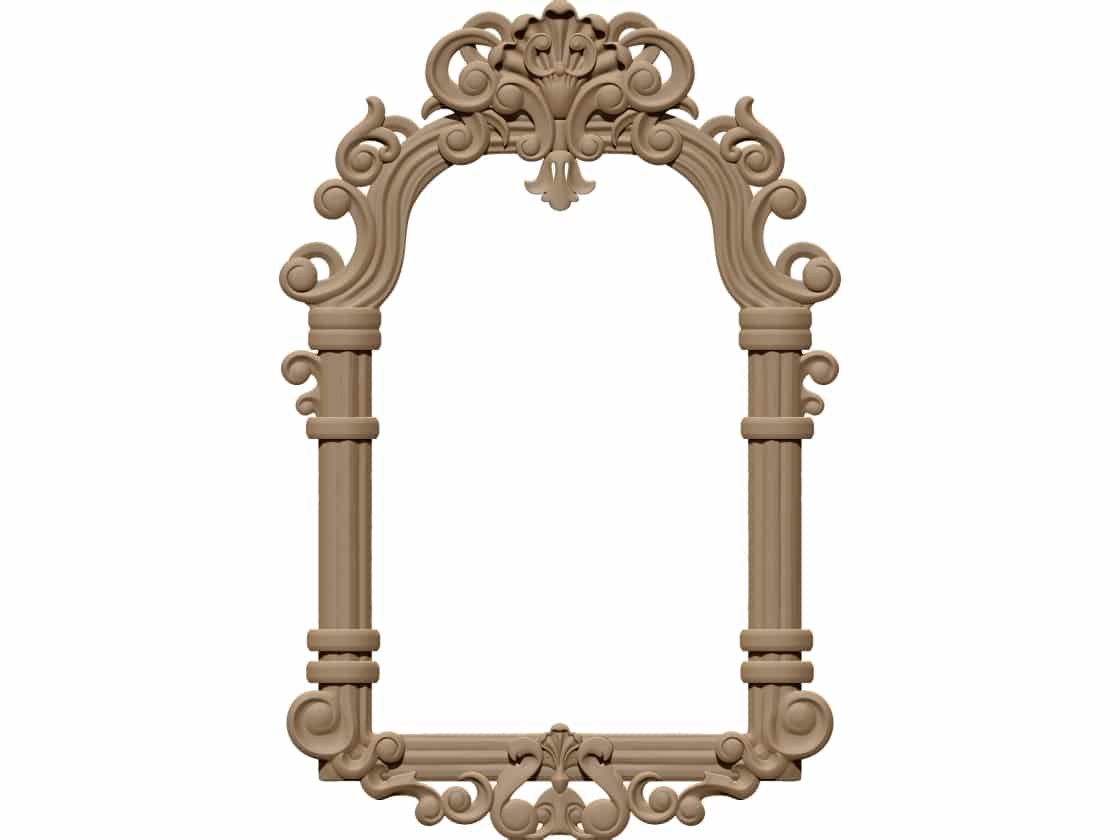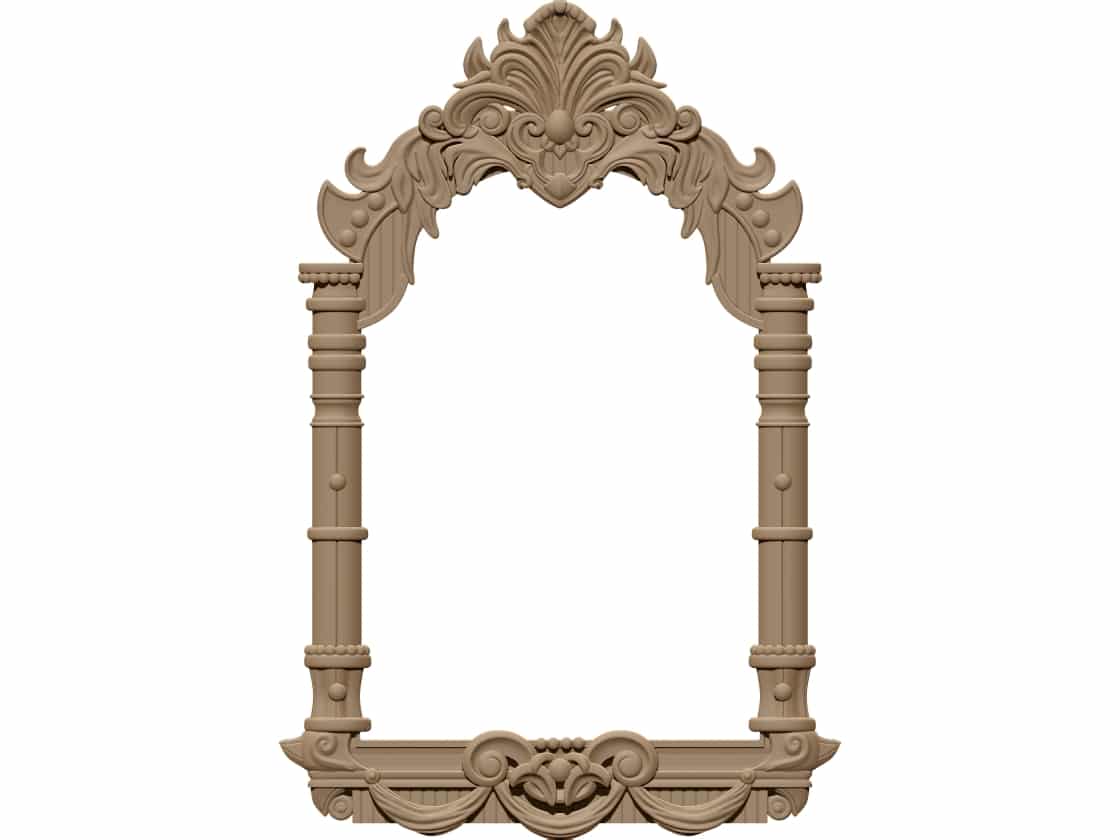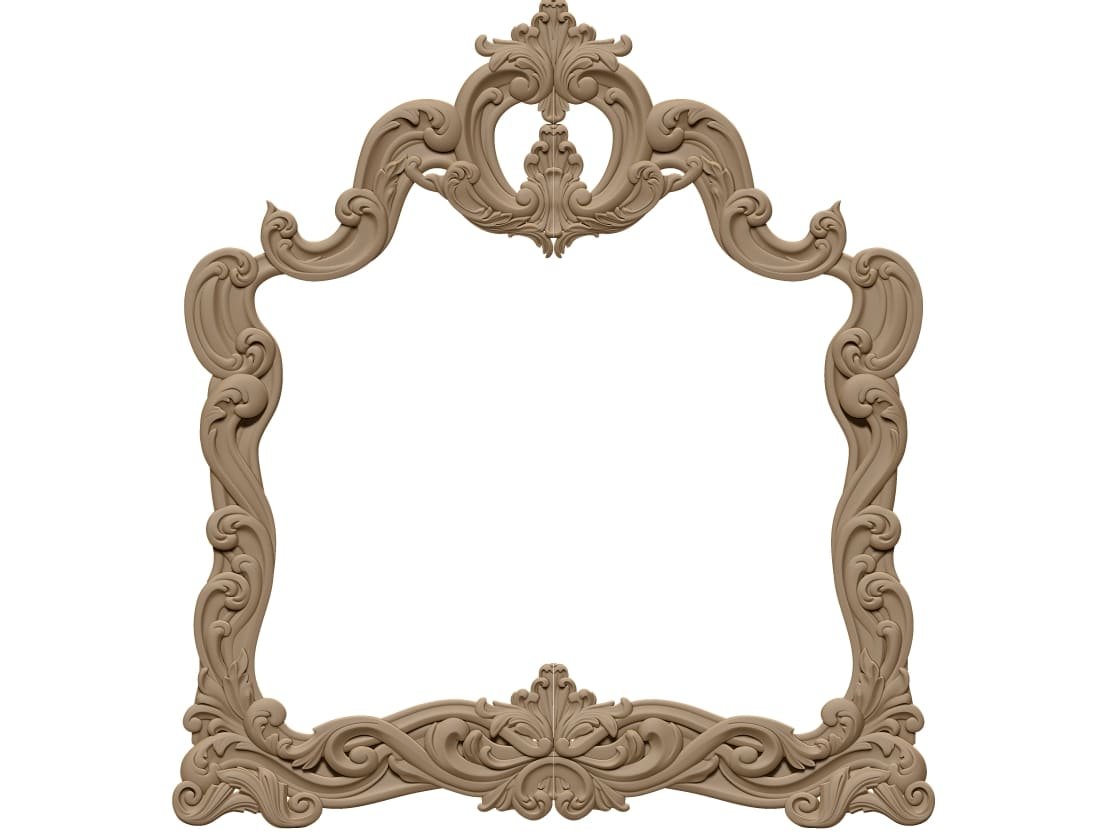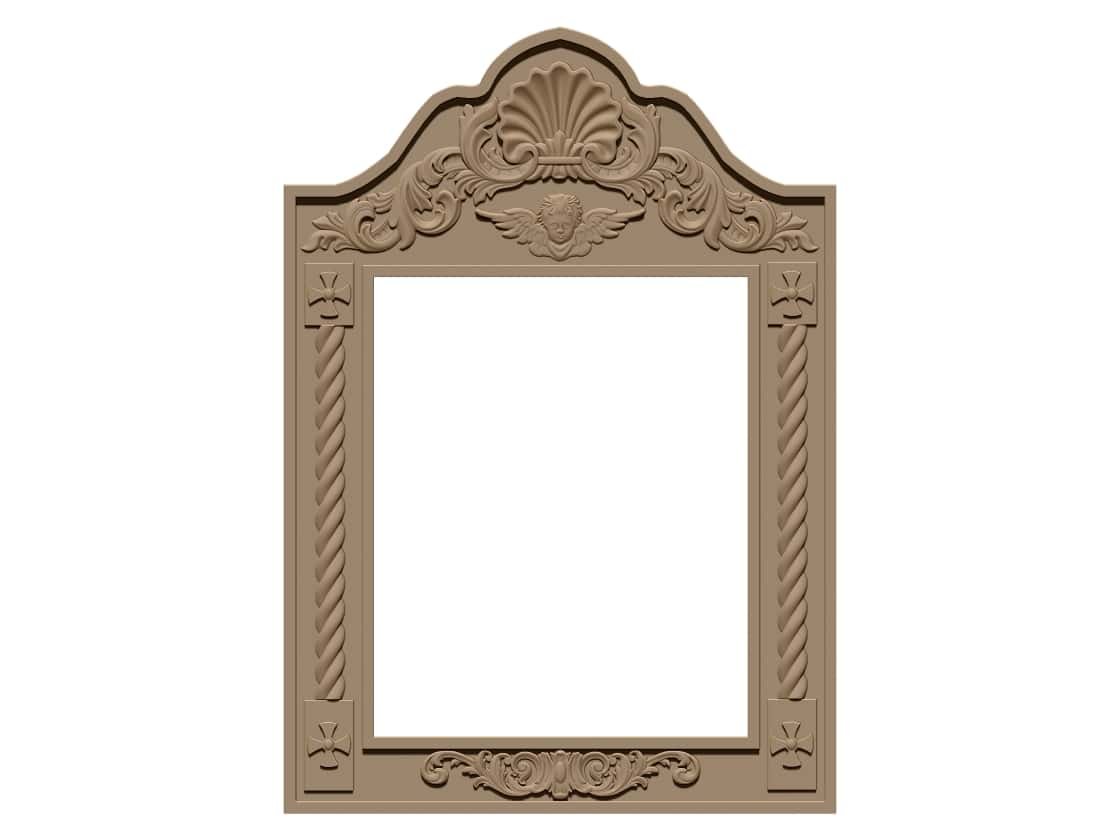

Certainly! Designing a mirror frame for CNC wood carving as an STL file involves creating a digital model that can be translated into machine instructions for a CNC (Computer Numerical Control) router or milling machine. Here’s a description for a mirror frame design suitable for CNC wood carving:
Mirror Frame Design Description:
1. Style:
- Choose a style that complements the overall aesthetic of the room or space where the mirror will be placed. It could be traditional, modern, rustic, or a fusion of different styles.
2. Dimensions:
- Specify the dimensions of the mirror frame based on the size of the mirror it will encase. Ensure that the proportions are visually appealing and that the frame provides adequate support.
3. Ornamentation:
- Incorporate decorative elements like patterns, motifs, or reliefs to add visual interest. These can be inspired by nature, geometric shapes, or cultural influences.
4. Material Consideration:
- Keep in mind the properties of wood, such as grain direction and hardness, to optimize the design for CNC wood carving. Consider the type of wood you’ll use, whether it’s oak, maple, walnut, etc.
5. Carving Depth:
- Define the carving depth for different elements of the design. This could range from shallow engravings to deeper reliefs, adding a three-dimensional aspect to the frame.
6. Frame Structure:
- Design a sturdy and well-supported frame structure. Consider the attachment points for the mirror, ensuring it is securely held in place.
7. Edge Profile:
- Define the edge profile of the mirror frame. This could be a simple bevel, a chamfer, or a more intricate molding detail.
8. Symmetry:
- Ensure symmetry in the design to create a balanced and visually pleasing frame. This is especially important if the mirror will be a focal point in the room.
9. File Format:
- Save the design in STL (StereoLithography) format, which is commonly used for 3D printing and CNC machining. This file format contains the information needed for the CNC machine to carve the design accurately.
10. Test and Refine:
- Before finalizing the design, consider running a test carve on a small piece of wood to ensure that the details translate well from the digital model to the physical carving. Make any necessary refinements based on the test results.
By paying attention to these aspects, you can create a mirror frame design that not only serves its functional purpose but also adds a touch of elegance and personality to the space.





